In 2025, ergonomic office solutions have become essential for enhancing productivity. This article provides a comprehensive analysis of the monitor stand market, detailing the latest trends and innovations. Professional buyers will find valuable insights to make informed decisions, ensuring they stock the best products for their clients.
Table of Contents:
– Market Overview of Monitor Stands for Workspace Productivity
– Detailed Introduction and Analysis of the Monitor Stand Market
– Key Factors When Selecting a Monitor Stand for Workspace Productivity
– Enhancing Workspace Ergonomics
– Material Considerations for Monitor Stands
– Technical Specifications and Features
– Price Range and Budget Considerations
– Monitor Stands and Workspace Efficiency
– Alternative Options and Accessories
Market Overview of Monitor Stands for Workspace Productivity
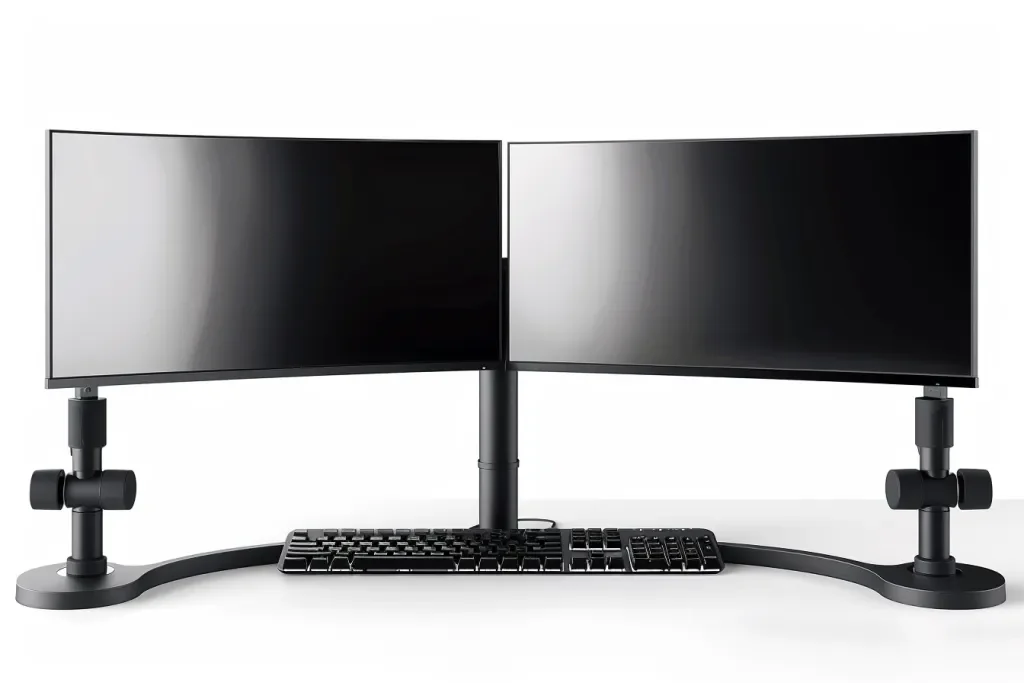
The market for monitor stands has grown significantly due to the increasing demand for ergonomic solutions in both home and office settings. In 2024, the global monitor stand market was valued at approximately USD 1.2 billion and is projected to reach USD 1.8 billion by 2029, growing at a CAGR of 7.1%. This growth is driven by the rising awareness of the importance of ergonomic office setups, leading to more people using monitor stands to boost productivity and reduce physical strain.
North America holds the largest market share, accounting for 35% of global revenue in 2024. This is due to the high concentration of corporate offices and the widespread adoption of remote working practices. Europe follows with a 28% market share, driven by stringent workplace health and safety regulations that encourage the use of ergonomic office furniture. The Asia-Pacific region is expected to witness the fastest growth, with a CAGR of 9.5%, fueled by the rapid expansion of the IT sector and the increasing number of small and medium-sized enterprises (SMEs).
The market is segmented based on product type, including adjustable monitor stands, dual and multi-monitor stands, and fixed monitor stands. Adjustable monitor stands are the most popular, accounting for 45% of the market share in 2024, due to their flexibility and ability to cater to various user needs. The dual and multi-monitor stands segment is also gaining traction, especially among professionals in finance and creative industries who require multiple screens for their work.
Detailed Introduction and Analysis of the Monitor Stand Market
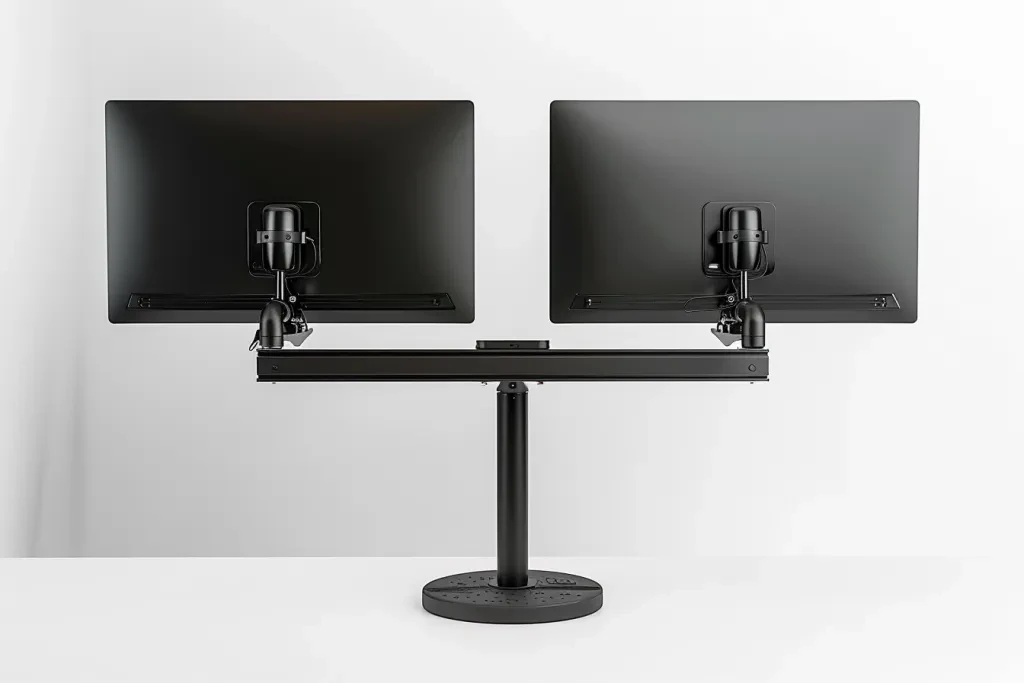
The monitor stand market is characterized by several key performance benchmarks, including adjustability, weight capacity, and material quality. High-quality monitor stands support a range of monitor sizes and weights, typically between 5 to 15 kilograms, and offer features such as height adjustment, tilt, and swivel capabilities. These features are essential for creating ergonomic workstations that improve user comfort and productivity.
Established brands such as Ergotron, AmazonBasics, and VIVO dominate the market, collectively holding a 60% share in 2024. These companies have a strong presence in both online and offline distribution channels, leveraging their brand recognition and extensive product portfolios. Emerging players focus on innovation and niche markets to gain a foothold, offering specialized products such as eco-friendly and minimalist monitor stands.
Economic influences, such as increasing disposable income and the growing trend of home offices, are driving the demand for monitor stands. The COVID-19 pandemic has accelerated the adoption of remote work, leading to a surge in demand for ergonomic home office setups. Seasonal demand patterns also play a role, with peak sales observed during back-to-school and holiday seasons when consumers invest in home office equipment.
Distribution channel preferences have shifted significantly towards e-commerce platforms, which accounted for 55% of monitor stand sales in 2024. Online retailers offer a broader range of products, competitive pricing, and the convenience of home delivery, making them the preferred choice for consumers. Brick-and-mortar stores remain important for customers who prefer to physically inspect products before purchase.
Recent innovations in the market include the integration of cable management systems, built-in USB hubs, and smart features such as height adjustment memory settings. These advancements cater to the evolving needs of consumers, enhancing the functionality and convenience of monitor stands. Adjustable and multi-monitor stands are in the growth phase, while fixed stands are in the maturity phase with limited innovation.
Digitalization and social trends are influencing consumer behavior, with increasing awareness of the importance of ergonomic work environments being highlighted on social media platforms. Environmental regulations are also shaping the market, with manufacturers focusing on sustainable materials and eco-friendly designs to meet regulatory requirements and appeal to environmentally conscious consumers.
Customer pain points such as neck and back pain, cluttered workspaces, and limited desk space are being addressed by monitor stand manufacturers through ergonomic designs and space-saving solutions. Brand positioning strategies emphasize quality, durability, and ergonomic benefits, with differentiation strategies focusing on innovative features, aesthetic designs, and eco-friendly materials.
Niche markets, such as gaming and creative industries, are emerging as significant segments, with specialized monitor stands designed to meet the unique needs of these users. For instance, gaming monitor stands offer features like RGB lighting and enhanced stability for large, curved monitors, while creative professionals prefer stands with precise adjustment capabilities for multi-monitor setups.
Key Factors When Selecting a Monitor Stand for Workspace Productivity
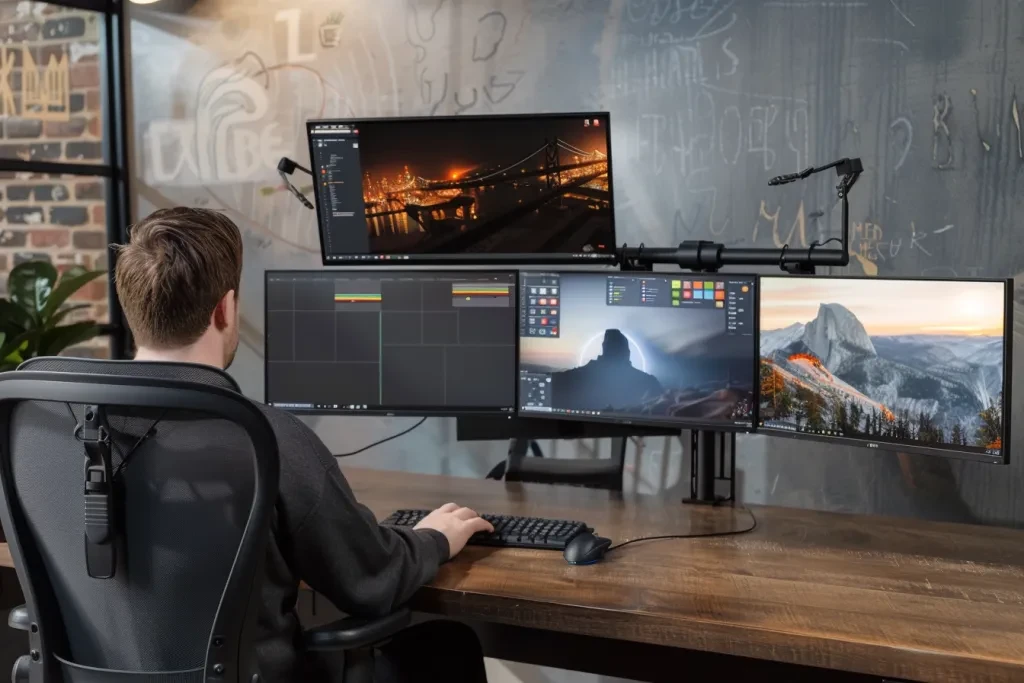
Choosing the right monitor stand is crucial for enhancing workspace productivity. It involves considering multiple aspects such as ergonomics, material quality, adjustability, and compatibility with different monitors. Here are the key factors to consider:
Ergonomics
Ergonomics play a vital role in selecting a monitor stand. It ensures that the monitor’s height and angle can be adjusted to reduce strain on the neck and eyes.
A good ergonomic monitor stand should allow for height adjustment, tilt, swivel, and rotation. This ensures that users can set their monitors at eye level, which is recommended to prevent neck strain. Improper monitor height can lead to discomfort and long-term musculoskeletal issues.
Some advanced ergonomic stands come with features like gas spring arms, providing smooth and effortless adjustments. These stands are ideal for shared workspaces where multiple users might need to adjust the monitor according to their preferences.
Material and Build Quality
The material and build quality of a monitor stand significantly impact its durability and stability.
High-quality monitor stands are typically made from materials such as aluminum, steel, or high-grade plastic. Aluminum stands are lightweight yet strong, making them ideal for modern, minimalist workspaces. Steel stands offer superior durability and can support heavier monitors, ensuring stability and longevity.
Additionally, the finish and construction quality should be considered. A well-built stand with a smooth finish will not only look aesthetically pleasing but also reduce the risk of scratches and damage to the monitor and desk.
Adjustability and Flexibility
Adjustability is a critical factor in enhancing workspace productivity.
A monitor stand should provide a wide range of adjustments to cater to different working styles and preferences. Height adjustability is essential for setting the monitor at a comfortable eye level, while tilt and swivel adjustments help reduce glare and improve viewing angles.
Some advanced stands offer full-motion capabilities, allowing users to extend, retract, and rotate the monitor. These features are particularly useful in dynamic work environments where multiple tasks require different monitor positions. Flexibility in adjustment ensures that the monitor can be positioned optimally for various activities, such as coding, designing, and content creation.
Compatibility
Compatibility with different monitor sizes and weights is another essential consideration.
Before purchasing a monitor stand, it’s crucial to check the stand’s weight capacity and the size range it supports. Most stands are designed to accommodate standard monitor sizes, but it’s always best to verify the specifications.
VESA compatibility is also significant. VESA (Video Electronics Standards Association) mount compatibility ensures that the monitor can be securely attached to the stand. VESA mounts come in different sizes, so it’s important to ensure that the monitor and stand have matching VESA patterns.
Aesthetics and Design
The design and aesthetics of a monitor stand can influence the overall look and feel of a workspace.
A sleek and modern design can complement contemporary office setups, while a more robust and industrial design might be suitable for technical workspaces. The color and finish of the stand should match or complement the existing office furniture and décor.
Additionally, cable management features are a valuable addition. Stands with built-in cable management systems help keep the workspace tidy and organized, reducing clutter and enhancing the overall aesthetic appeal.
Enhancing Workspace Ergonomics
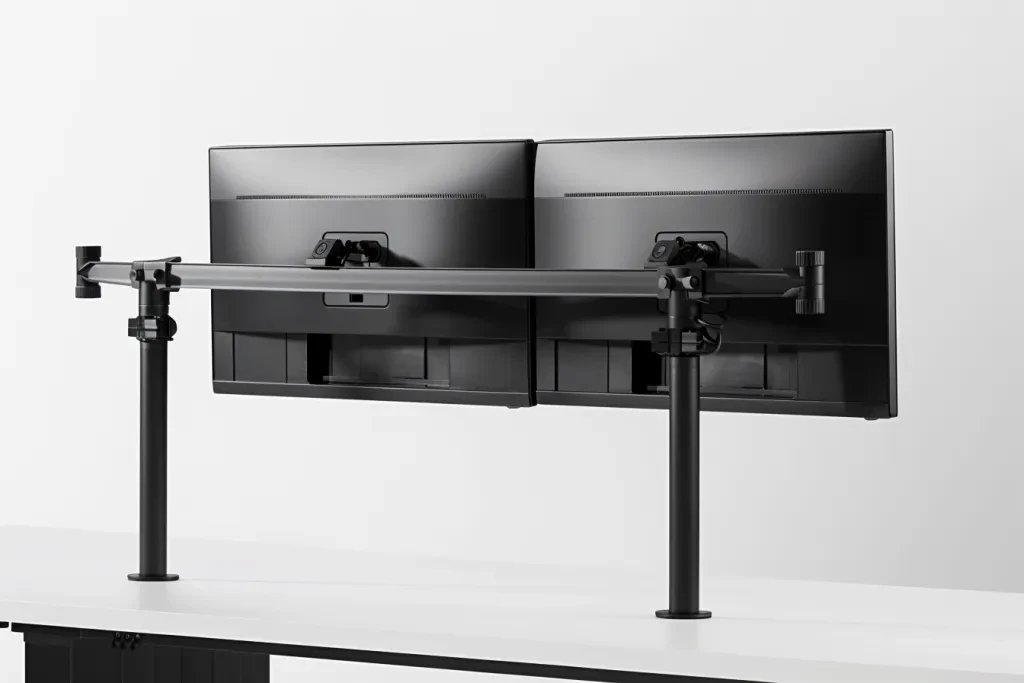
Optimizing workspace ergonomics is essential for maintaining productivity and comfort.
Ergonomic monitor stands help in reducing physical strain by allowing users to position their monitors at eye level. This alignment minimizes the need to tilt the head, thereby reducing neck and shoulder strain. Proper ergonomics can also prevent eye strain by maintaining an appropriate distance between the eyes and the screen.
Investing in an adjustable monitor stand can significantly improve posture and reduce the risk of musculoskeletal disorders. Ergonomically designed stands encourage users to adopt a neutral posture, which is crucial for long-term health and productivity.
Material Considerations for Monitor Stands
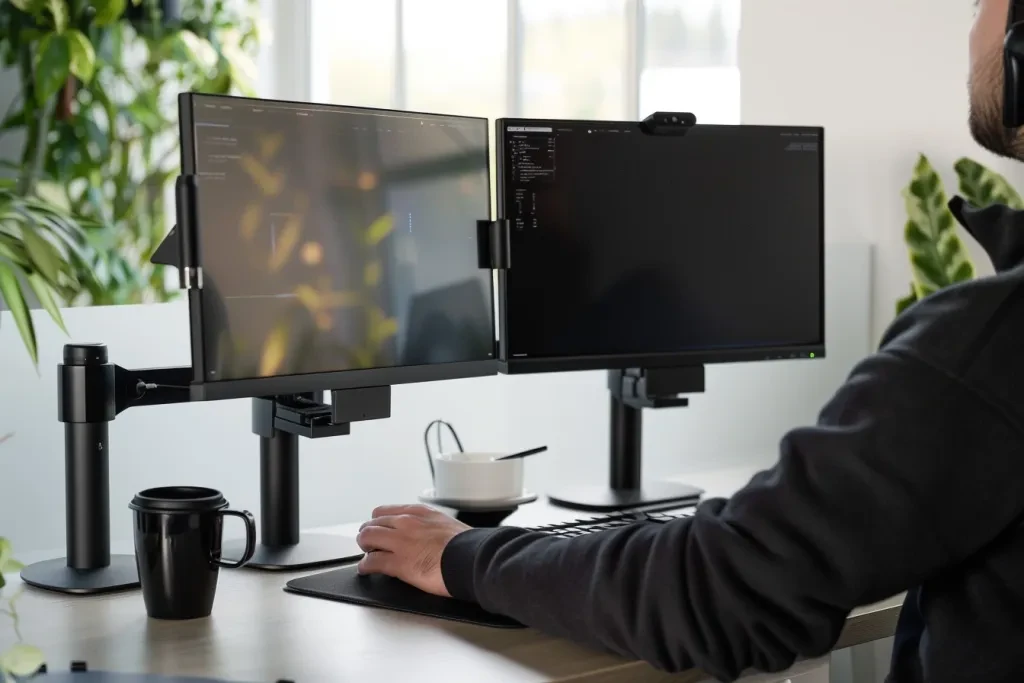
The choice of material in monitor stands affects both functionality and aesthetics.
Aluminum stands are popular for their lightweight and sturdy properties. They offer a sleek, modern look that fits well with contemporary office designs. Steel stands are known for their durability and ability to support heavier monitors. They are ideal for robust setups that require stability and strength.
Plastic stands, although less durable, are lightweight and often more affordable. They are suitable for light to medium-weight monitors and come in various designs and colors, providing more aesthetic flexibility. Each material has its advantages, and the choice depends on the specific needs and preferences of the user.
Technical Specifications and Features
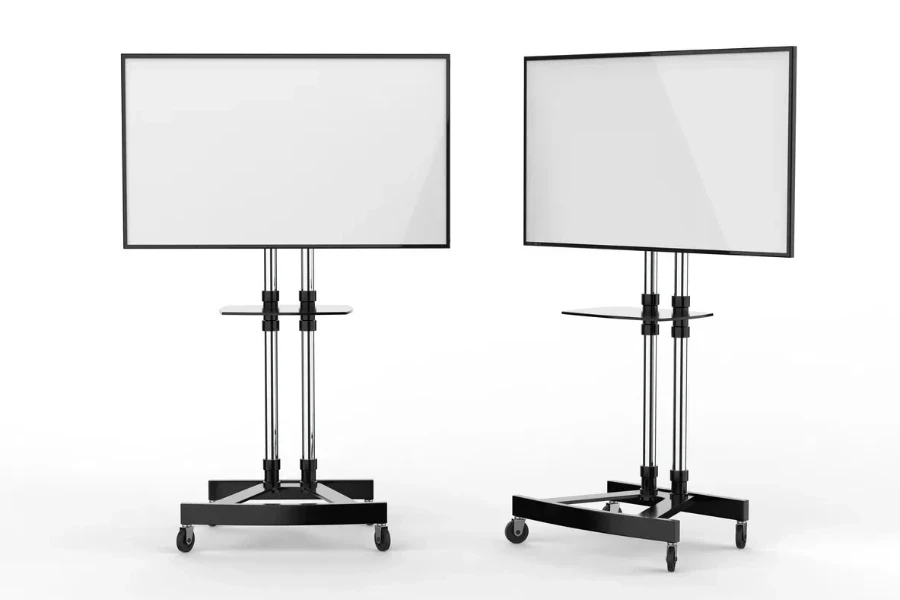
Technical specifications and features are crucial in determining the suitability of a monitor stand.
Key specifications to consider include weight capacity, height range, and adjustment capabilities. A stand with a higher weight capacity can support larger monitors, providing stability and safety. The height range determines how high or low the monitor can be positioned, which is essential for ergonomic setups.
Advanced features like gas spring arms, full-motion adjustability, and integrated cable management enhance the functionality of the stand. Gas spring arms allow for smooth and effortless adjustments, while full-motion capabilities enable users to position the monitor in various orientations. Integrated cable management keeps the workspace organized by hiding cables and reducing clutter.
Price Range and Budget Considerations

Price is a significant factor when selecting a monitor stand.
Monitor stands come in various price ranges, from budget-friendly options to premium models with advanced features. Budget-friendly stands typically offer basic adjustability and are made from plastic or lower-grade materials. These are suitable for light to medium-weight monitors and standard office use.
Mid-range stands often feature better build quality, more adjustability options, and additional features like cable management. Premium stands offer superior materials, advanced adjustment mechanisms, and enhanced ergonomics. They are ideal for professional setups that require high levels of customization and durability.
Monitor Stands and Workspace Efficiency

Workspace efficiency can be significantly improved with the right monitor stand.
An adjustable monitor stand allows users to create an organized and clutter-free workspace. By elevating the monitor, additional desk space is freed up, which can be used for other essential items. This organization leads to a more efficient and productive work environment.
Moreover, the ability to adjust the monitor’s position quickly and easily means that users can switch between tasks without interruption. This flexibility is particularly beneficial in dynamic work environments where multitasking is common. A well-organized and efficient workspace contributes to overall productivity and job satisfaction.
Alternative Options and Accessories

Exploring alternative options and accessories can enhance the functionality of monitor stands.
For instance, dual monitor stands are ideal for users who work with multiple screens. They offer the same adjustability features but with the added benefit of supporting two monitors. This setup is particularly useful for tasks that require extensive multitasking, such as coding, design, and financial analysis.
Additional accessories like monitor risers, laptop stands, and desk mounts can complement monitor stands and provide further customization. Monitor risers elevate the monitor to eye level, while laptop stands allow for ergonomic positioning of laptops. Desk mounts offer a space-saving solution by attaching the monitor to the edge of the desk, freeing up valuable desk space.
Final Thoughts
In summary, selecting the right monitor stand involves considering multiple factors such as ergonomics, material quality, adjustability, compatibility, design, technical specifications, and budget. By carefully evaluating these aspects, users can enhance their workspace productivity, comfort, and efficiency. An investment in a high-quality monitor stand is an investment in long-term health and productivity.



